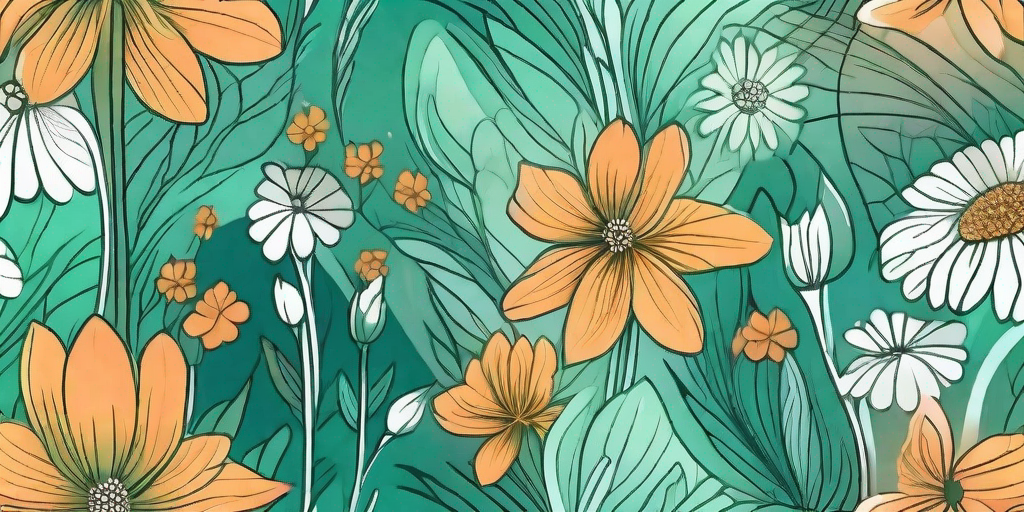
There's a certain kind of magic that comes with the blooming of Baptista flowers. The way their petals unfurl, revealing a burst of color that can brighten even the gloomiest of days. But what's the story behind these beautiful blossoms? Let's dive in and discover the magic of Baptista flowers together.
The Enchanting World of Baptista Flowers
What are Baptista Flowers?
Baptista flowers, also known as wild indigo or false indigo, are a group of flowering plants native to North America. They're part of the pea family, which might explain their love for sun and their ability to withstand dry conditions. They come in a variety of colors, from blue and purple to white and yellow, making them a vibrant addition to any garden.
These perennials are not only beautiful, but they're also quite hardy. They can survive in poor soil and resist pests and diseases, making them a favorite among gardeners. But their charm doesn't stop there. Baptista flowers have a rich history and a plethora of uses that make them truly magical.
The History of Baptista Flowers
The history of Baptista flowers is as colorful as their petals. Native Americans used these plants for medicinal purposes, treating everything from toothaches to snake bites. They also used the plant's blue dye for their clothing and crafts, hence the name 'wild indigo'.
Fast forward to the present day, Baptista flowers are now cultivated for their ornamental value. Their vibrant colors and unique shape make them a standout in any garden. Plus, they're a magnet for butterflies, adding a touch of whimsy to their surroundings.
Planting and Caring for Your Baptista Flowers
How to Plant Baptista Flowers
Planting Baptista flowers is as easy as pie, or maybe even easier. First, you need to find a sunny spot in your garden. These flowers love the sun and need at least six hours of it each day. Once you've found the perfect spot, dig a hole that's twice as wide and as deep as the root ball of your plant.
Place your plant in the hole, making sure that the top of the root ball is level with the soil surface. Backfill the hole with soil, firm it gently, and water thoroughly. And voila! You've just planted your first Baptista flower.
Caring for Your Baptista Flowers
Caring for Baptista flowers is a walk in the park. These plants are drought-tolerant, so they don't need frequent watering. In fact, overwatering can lead to root rot. So, it's best to let the soil dry out between waterings.
As for fertilizing, Baptista flowers are not heavy feeders. A light application of a balanced fertilizer in the spring should be enough. And don't forget to mulch around the base of the plant to help conserve moisture and suppress weeds.
Fun Facts About Baptista Flowers
Did You Know?
Now, let's sprinkle some fun facts into our Baptista flower journey. Did you know that Baptista flowers are deer-resistant? Yes, you heard it right. These plants contain alkaloids that are toxic to deer, making them a great choice for gardens that are often visited by these creatures.
Another fun fact is that Baptista flowers are slow growers. It might take them a few years to reach their full size, but once they do, they're incredibly long-lived. Some plants have been known to live for over 20 years!
FAQs About Baptista Flowers
Are Baptista Flowers Poisonous?
Yes, Baptista flowers are poisonous if ingested. They contain alkaloids that can cause nausea, vomiting, and diarrhea. So, it's best to keep them out of reach of children and pets.
Do Baptista Flowers Attract Bees?
Yes, Baptista flowers are a favorite among bees and other pollinators. Their vibrant colors and sweet nectar are hard to resist. So, if you're looking to attract these beneficial insects to your garden, Baptista flowers are a great choice.
When Do Baptista Flowers Bloom?
Baptista flowers typically bloom in late spring to early summer. However, the exact timing can vary depending on the variety and the growing conditions.
Conclusion
And there you have it, the magic of Baptista flowers. From their vibrant colors and hardy nature to their rich history and myriad uses, these plants are truly a gem. So, why not add some Baptista flowers to your garden and experience their magic firsthand?
Remember, the beauty of gardening is not just in the blooming of the flowers, but in the journey of planting and nurturing them. So, embrace the process and let the magic of Baptista flowers inspire you.















